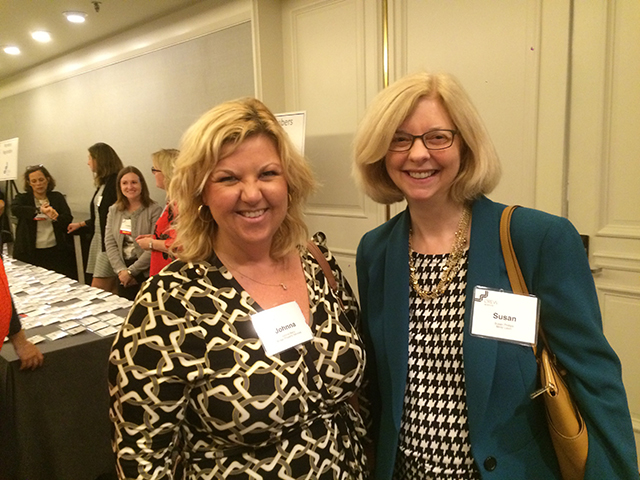CREW Boston’s September luncheon featured Doug Poutasse of Bentall Kennedy, a Harvard-trained economic analyst and forecaster who shared his insights on mega trends in capital markets, the real estate industry and the overall economy.
Overall, he had good news to share. Here are the key takeaways:
1. U.S. economic growth is stable. In the wake of the United Kingdom’s decision to leave the European Union, the U.S. has remained stable despite the market being weaker than expected. The U.K. has, unsurprisingly, seen a significant decline in projected growth post-Brexit, while the European Union has remained steady.
2. Interest Rates in the U.S. are high, not low. Perception in the market is that U.S. interest rates are low, but looking at the broader picture this just isn’t the case. The U.S. and Europe have seen solid economic recovery since the Great Recession, but rates remain higher in the U.S. than almost anywhere else. Compare this to the latest news in Switzerland, where firms have been issuing bonds with a negative interest rate – an idea that was previously unthinkable.
3. Job growth remains healthy. The U.S. economy is growing faster than the labor market. This is challenging, especially for a service economy.
4. Job growth is dominated by services and innovation. This trend is especially apparently locally, where health care, technology, education and professional services are the mainstay of the economy. As a result, talent is aggregating in cities such as Boston, New York, San Francisco, Denver, Portland and Seattle. And companies are moving to these cities to be close to the talent - not the other way around. Innovation markets are also getting more expensive, which is not necessarily a bad thing
5. American job growth is not positively correlated with oil prices. Because the U.S. economy is diverse, job growth isn’t nearly as tied to the price of oil as some of the other top production nations. Oil prices are low. So is unemployment.
6. Home prices have recovered, but home building has not. The U.S. housing sector is crawling back out of its deep hole, but the number of single family homes being built is only at half the rate from the 2007 peak; construction is not meeting the rate of population growth, which is why prices are climbing. However, there are some markets where too much rental housing is being built given its growth. These cities include: Nashville, Newark and Houston.
7. Wage growth, cheap oil, and rising home values = tailwinds for consumers. American consumers are saving money again, which is good. But it also means they are being cautious.
Overall, Poutasse said that the U.S. economy is poised for continued growth, with 2.5 million jobs created within the last year. However, consumers remain cautious and have decreased spending despite an increase in wages. Demographically, immigrants, baby boomers and millennials are key transformative forces in terms of labor markets, housing markets and consumption. The election does raise the risk of market uncertainty or policy changes but so far, the future looks bright.
Thank you to InkHouse for our luncheon recap.










